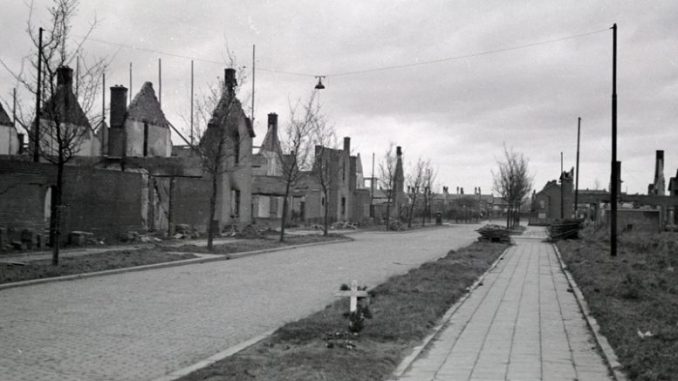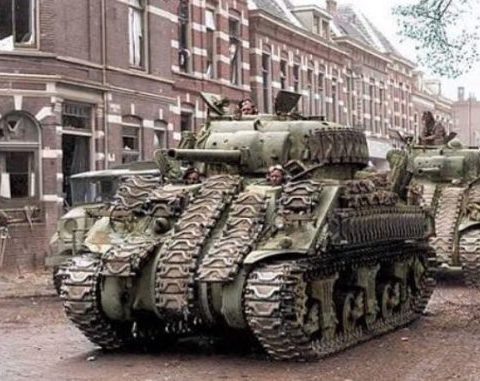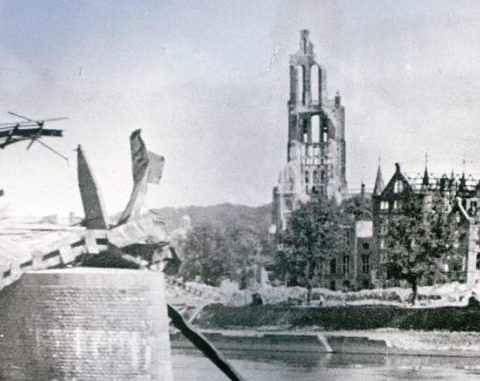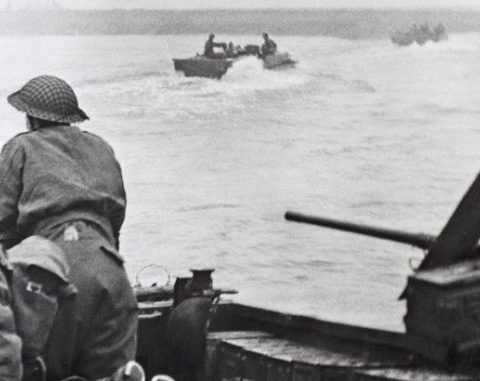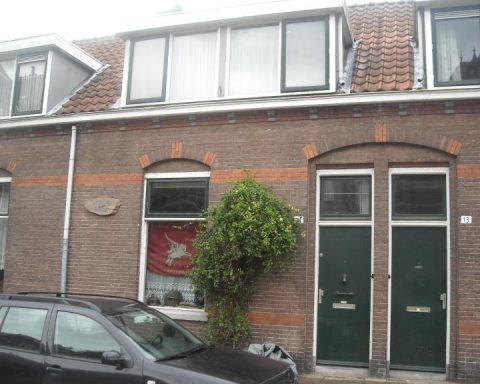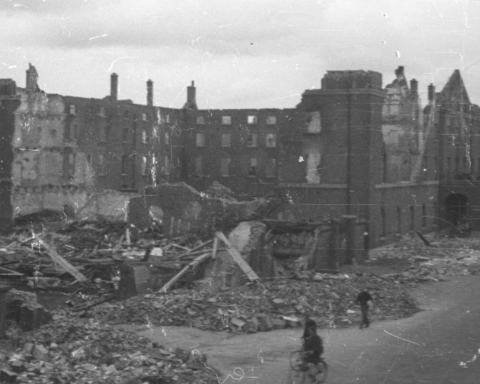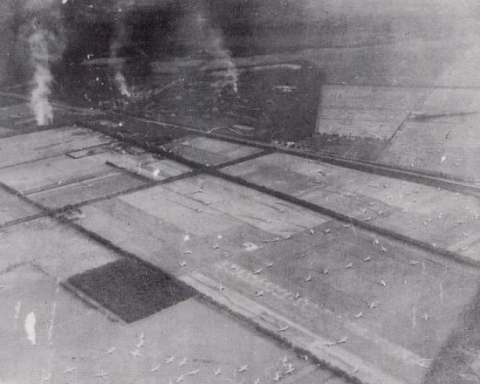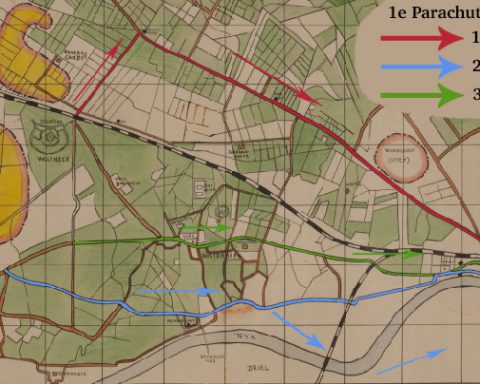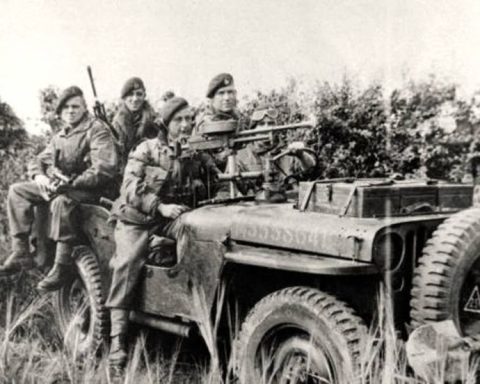Nowadays half of the population of Arnhem lives in Arnhem South, but during the Second World War it was just a small neighbourhood. There were some streets in Malburgen East and there was De Praets in Meinerswijk. It was nothing more than that. Elden was a little further south, but that village was not yet part of Arnhem.
Arnhem South was the first part of Arnhem that was liberated by the Allies on April 3, 1945.
Initially, the intention was that Arnhem would be liberated as early as February 1945. Just like in September 1944, the Allies wanted to use Arnhem to make the jump over the Rhine. The Allied armies would then turn right from Arnhem and drive into Germany.
Because of Arnhem’s location against the hills of the Veluwe, this plan was soon scrapped. The German guns would have a clear view of the advancing soldiers and the allied strategists foresaw a massacre.
In February 1945, the German army was far from defeated. The Rhine was the last line of defense for the Germans, and the Allies knew that breaking that line was no easy task.
Operation Plunder
The Allied armies’ raid over the Rhine to invade Germany was eventually carried out south of Arnhem, near the German Wesel. After more than a month of preparation, bombing and artillery shelling, Field Marshal Montgomery launched Operation Plunder on March 23. More than a million Allied soldiers were involved.
The night before Operation Plunder took off, US General George Patton, with a division near Mainz, had also crossed the Rhine.
Patton had not been ordered by the High Command to cross the Rhine, but the American general hated Montgomery and was keen to show that he was the better military leader. This was evident from the communiqué distributed by the Americans after the successful crossing:
“Without the benefits of aerial bombardment, smoke grenades, artillery preparations and support for airborne troops, the 3rd Army crossed the Rhine on 22 March at 22:00.”
To Allied Commander-in-Chief Dwight D. Eisenhower, Patton wrote succinctly:
“I just pissed in the Rhine. For god’s sake send some gasoline.”
Right. Now that the Allies had crossed the Rhine in several places on March 23, the German resistance was quickly broken. German soldiers surrendered by the thousands. The end of the war was in sight.
Canadian General Harry Crerar was therefore ordered by Montgomery on March 27 to liberate the Netherlands. Starting at Arnhem.
Crerar led the First Canadian Army. The 49th British Infantry Division, added to the Canadian First Army, was ordered to liberate Arnhem.
Operation Destroyer
Crerar decided to attack in two parts. Before the attack on Arnhem could be launched, ‘ The Island ‘ had to be liberated. The Island was the name given by the Allies to the area between the Waal near Nijmegen and the Rhine near Arnhem.
At the end of March 1945, the Germans still had a bridgehead south of the Rhine. Elden, Huissen, Malburgen and Angeren were in German hands.
The attack on the German positions on the south side of the Rhine was called Operation Destroyer. General Crerar, after a few days of preparation, ordered his troops to attack on April 2, 1945.
While the II Canadian Corps was ordered to liberate the east side of the IJssel between Emmerich and Westervoort, the 49th Division of the I Canadian Corps (nickname: the Polar Bears ) was ordered to move west of the Pannerdens Canal to advance to the banks of the Rhine. Although the division was under Canadian command, the Polar Bear Division conssisted mostly of British soldiers.
There was no major German resistance. Characteristic is the following anecdote from the book ‘The Polar Bears’ by Patrick Delaforce.
Neatly uniformed and armed with a walking stick, Captain Colin Kent walked confidently to the nearest house. He knocked on the door with his walking stick and yelled, “Come here,” Seven Germans tumbled with their hands over their heads. head out of the house. ”
But it was not so easy everywhere. Near Huissen, some people were killed by German machine gun fire and several British soldiers died when they were accidentally attacked by an RAF aircraft.
There were also deaths from detonating mines that the Germans had deposited all over the area.
But on the evening of April 3, the Polar Bears of the 49th Division were in the southern driveway of the Rhine Bridge near Arnhem. The bridge itself was destroyed and much of Arnhem was already in ruins.
It seemed like a breeze from the ramp to the Rhine Bridge to cross the Rhine and enter the ruined, empty city. But the Canadian military leadership did not take any chances.
The Allies had no idea how many German soldiers were stationed in Arnhem to defend the city. Aerial photographs of British reconnaissance aircraft showed that trenches had been constructed all along the banks of the Rhine to repel an attack over the Rhine.
Those trenches were dug by German troops immediately after the Battle of Arnhem in September 1944. After the airborne landings in September, the German army leadership long assumed that the Allies would make a new attempt to cross the Rhine near Arnhem, and preparations were therefore made to repel another attack.
How many troops were still in Arnhem at the beginning of April 1945 was a mystery to the Allies.
British reconnaissance troops were sent over the Rhine Arnhem at night to take a closer look. That provided some information, but not enough to get a good picture of the situation.
What at least became clear from the nightly patrols of the British is that the Germans assumed that the British wanted to cross the Rhine at the Westerbouwing in Oosterbeek.
The German presence seemed to be strongest here, including tanks and artillery cannons.
General Harry Crerar had indeed planned to attack Arnhem at the Westerbouwing in Oosterbeek. That in itself had nothing to do with the battle that took place exactly at this location during the Battle of Arnhem in September 1944.
The main reason for an attack on this spot was the foot ferry at Oosterbeek. The ferry was lost at the Battle of Arnhem, but the road here ran to the water of the Rhine. It was the easiest way for allied amphibious vehicles to get across.
Because the Germans had drawn the same conclusion, General Crerar decided to approach it differently. The Rhine is not the only river that runs past Arnhem. On the eastern side of the city there is also the IJssel.
So instead of an attack from Driel to Oosterbeek over the Rhine, Crerar decided to attack Arnhem from Westervoort over the IJssel. Before that attack, the Canadian general had a nice trump card. But to be able to play that card successfully, he still needed some extra time.
It therefore took more than a week before the attack on Arnhem, on 12 April 1945, was finally deployed.
The liberation of Arnhem:
Part 1: After the Battle of Arnhem
Part 2: The Liberation of Arnhem South
Part 3: The 2nd Battle of Arnhem
Part 4: Liberation of a ruined city
Part 5: Return in a lifeless city

